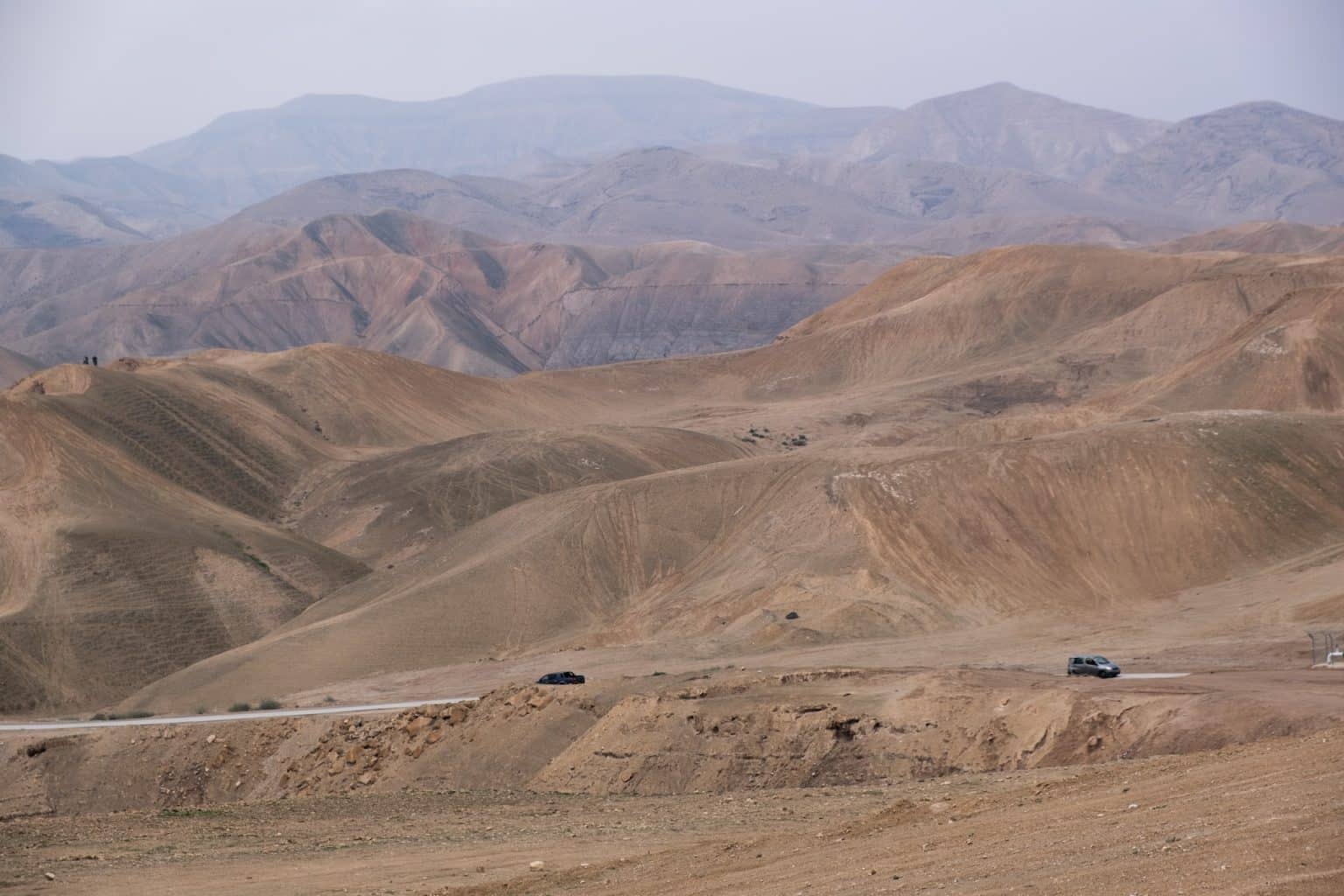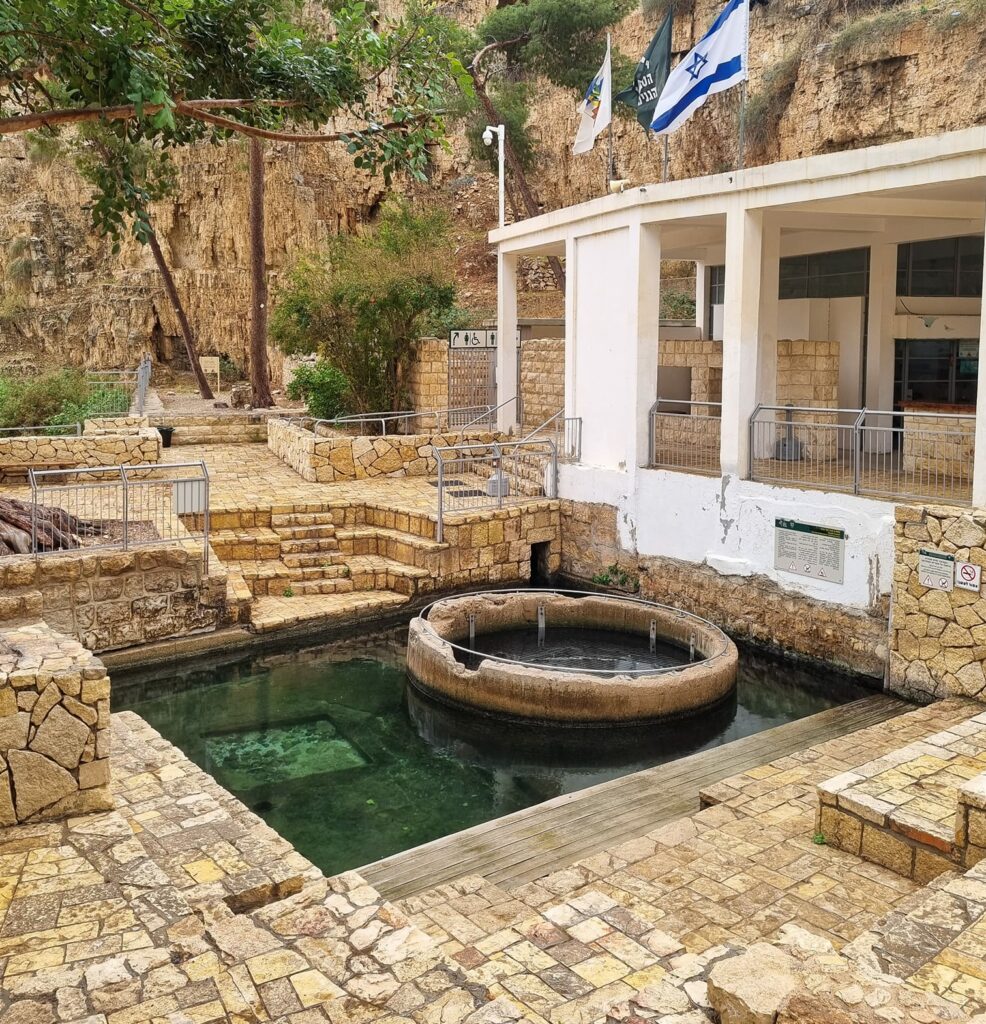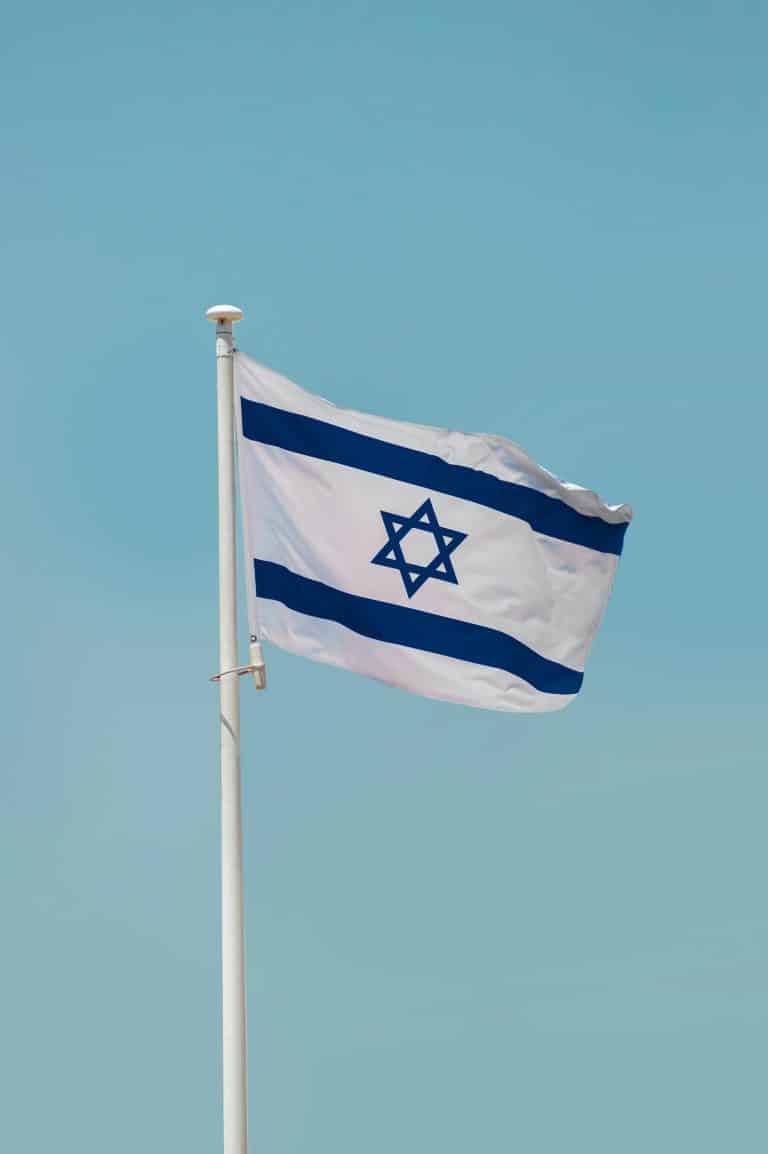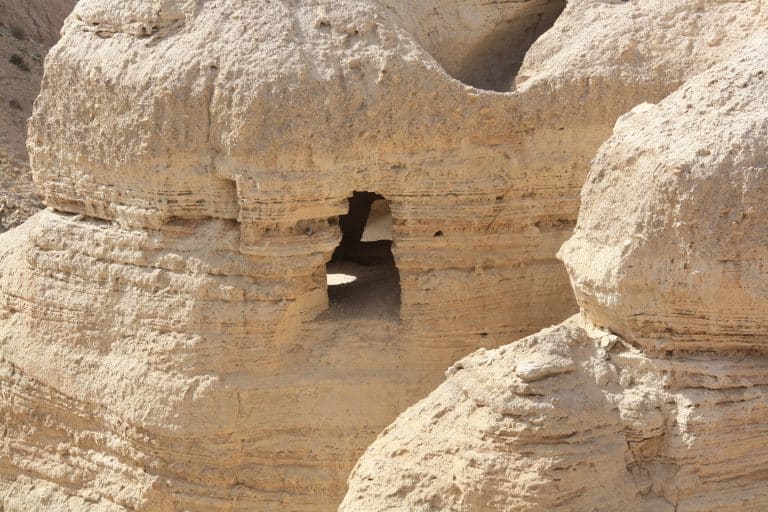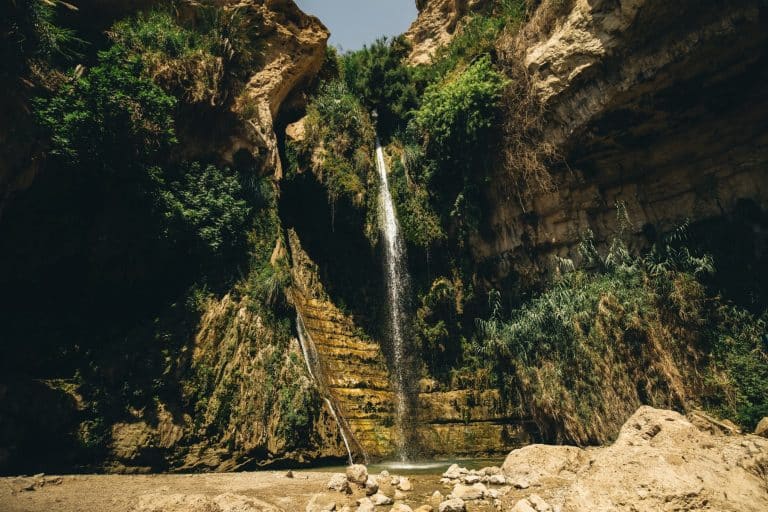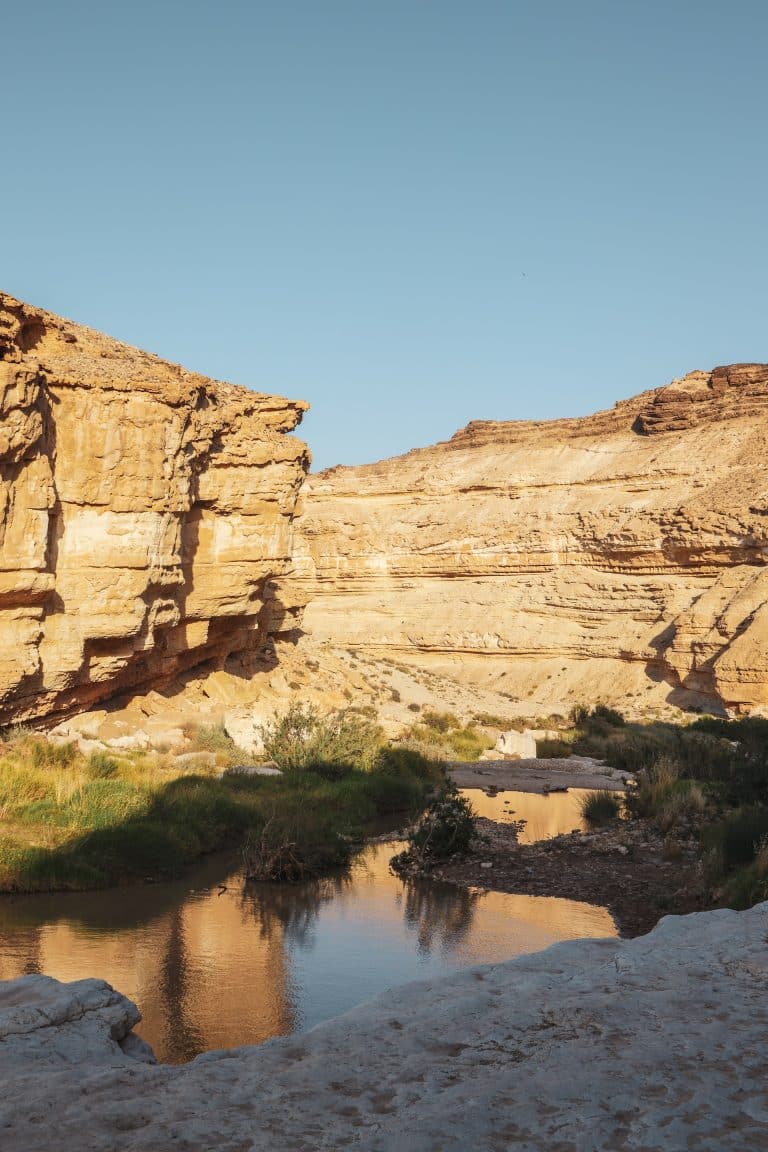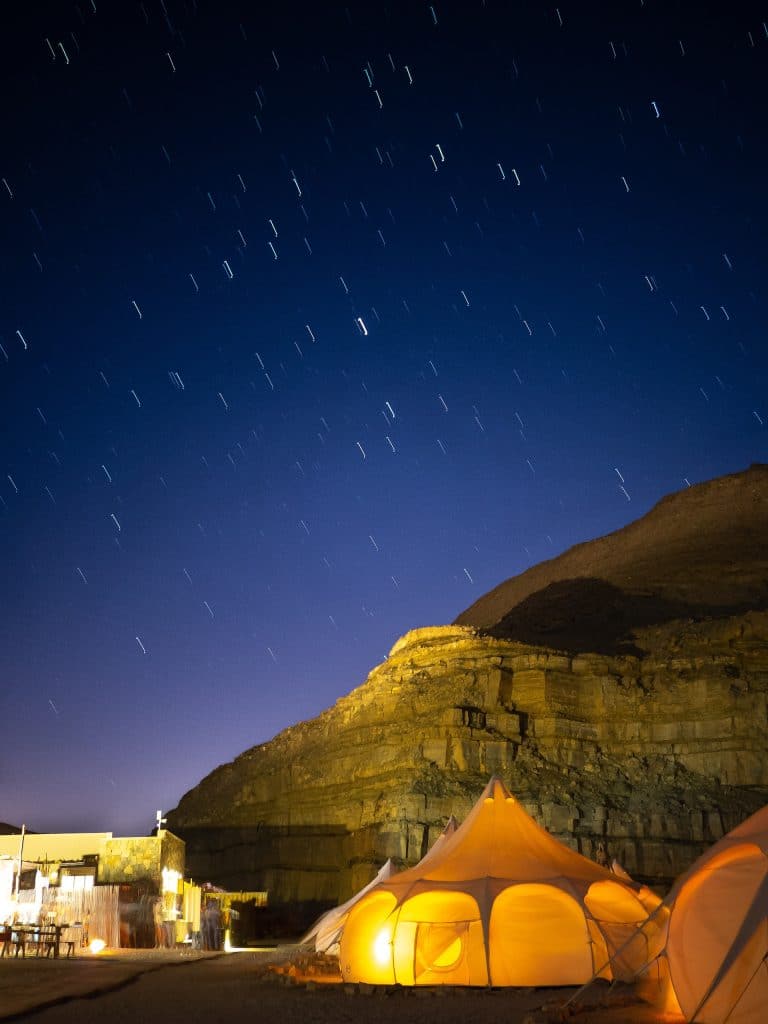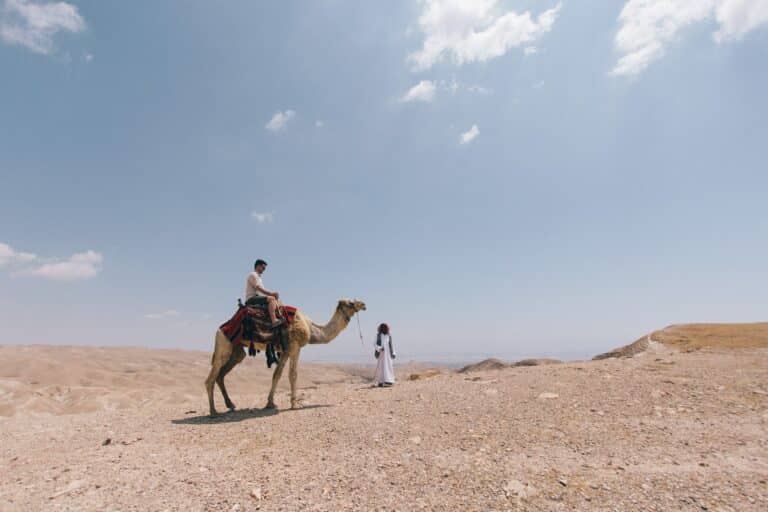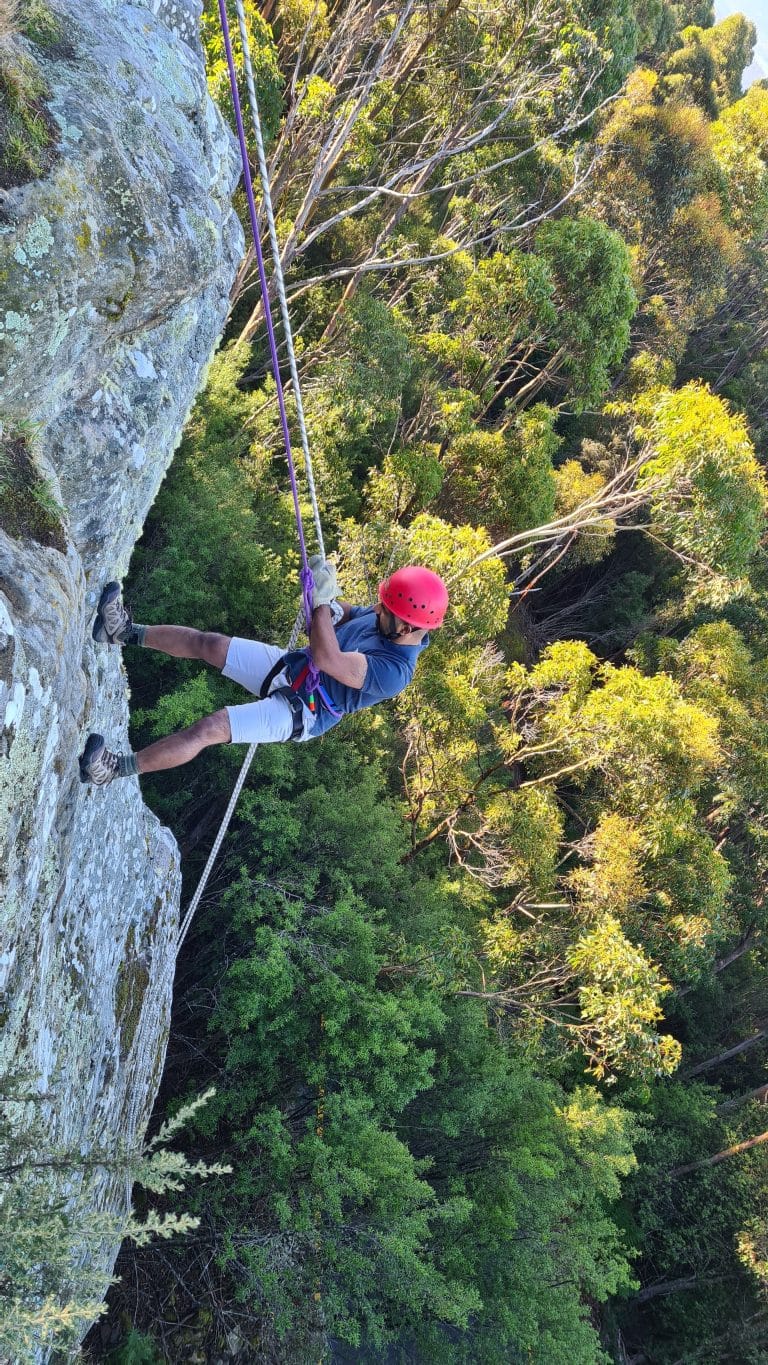The Judean desert, located in the north-eastern parts of the desert in southern Israel, not far from Jerusalem, is the most popular desert region in the country. This region features some of the most popular sites to visit in the entire country, combining rich history with amazing views. Here, we will go beyond the obvious must-visit sites, and tell you more about other great places to visit in this magnificent region.
Get to know the Judean Desert
The Judean Desert is a geographical area in the eastern part of the Land of Israel, located between the Judean Mountains and the Dead Sea. The length of the desert is about 85 kilometers/52 miles and its width is about 25 kilometers/15.5 miles. The area is characterized by a desert climate and a plateau topography that ends in a cliff in the east, which is divided by riverbeds flowing from west to east.
The origin of the desert’s name is in the Bible, where the name of the desert appears numerous times, as many well-known biblical stories took place here.
Unlike the other parts of the desert in Israel, the Judean Desert is not part of the global desert belt, but a local desert defined as a Rain Shadow Desert. In other words, the terrain conditions unique to the region turned it into a desert. The rain clouds rising from the Mediterranean Sea move eastward and drop most of their water as rain over the coastal plain and the Judean Mountains, where the temperatures are relatively low.
When the clouds move south and get above the Judean desert, where the temperature is higher, they expand and can no longer rain. When they come over the Dead Sea they fill up with water again and rain it down over the Gilead Mountains in Jordan.
Thus, the more you turn to the east in this region, the hotter and more arid the Judean desert becomes. Its driest areas receive about 50 mm/2 inches of rain per year. On the contrary, in the west of the Judean Desert, the yearly rainfall gets to about 250 mm/10 inches, making it a much more fertile area.
When it comes to fauna, Nubian Ibexes and rock hares are some of the most common animals in the Judean desert. In the recent past, tigers also lived in the area, but they became extinct due to illegal hunting. Typical birds that can be found here are short-tailed crows, Tristram’s starling, wagtail, ruffed grouse, and Asian desert warbler.
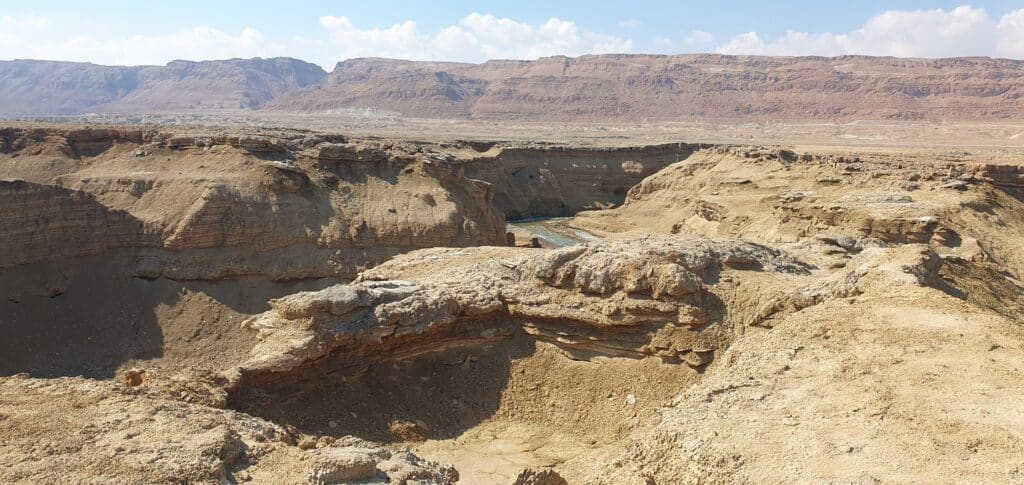
Best sites to visit in the Judean Desert
In addition to world-renowned sites like Masada, the Dead Sea, Qumran, and Ein Gedi, the stunning Judean Desert offers plenty of other magnificent sites to visit, that showcase the region’s stunning views and rich history. Here are some of the best lesser-known sites of this part of the desert in Israel.
Ein Mabu’a
Ein Mabu’a is a real oasis in the heart of the desert. This is one of the three springs of Wadi Qelt, and when visiting the reserve you can enjoy various hiking trails of several degrees of difficulty along the stream and under the desert cliffs, bathe in the pool water, see mosaics and antiquities, have a picnic by the stream, and see ancient aqueducts, which in the past were used to transfer the water from the spring.
The origin of the name Ein Mabu’a is in the unique natural phenomenon known as a rhythmic spring, since its waters emerge in pulses, and between the pulses – the spring gets suddenly dry, Hence its name, which translates to the bubbling spring. This is a special and rare phenomenon, as there are about a hundred such springs all over the world.
St. George Monastery
St. George Monastery is a very impressive monastery, built into the side of the mountain in the middle of the desert, and it has a history that begins in the fourth century AD and continues to the present day. Today ten monks live in the monastery.
Near the parking lot of the monastery is a gate with a large cross and three arches, and next to it is the path to the impressive viewpoint of the place. From here you can see the monastery in all its glory – an ancient and special Greek Orthodox monastery that seems to come out of the desert rock, places of solitude and prayer, metal crosses at the top of the hills, ancient stairs, and all next to an ancient bridge and aqueducts that carry water in the middle of the desert.
You can visit the monastery every day from 9:00 to 13:00.
Mitzpe Jericho Lake
Near the settlement of Mitzpe Jericho, located not far from Jericho city, there is a secret pool, which is known mostly to the locals that live around here. If you will come all the way here, you will discover the Mitzpe Jericho Lake, a natural pool that is a stunning oasis, with clean water and great views.
The size of the pool is about 7 meters/23 feet wide and about 20 meters/65 feet long, and it is relatively vertical – about 1.5 meters/5 feet in height.
Most beautiful rivers in the Judean Desert
As such a beautiful region, the Judean Desert offers plenty of great hikes, especially in magnificent rivers and canyons. Those offer amazing views and unique experiences in the heart of the desert. However, it’s important to make sure to check the weather before you go out into nature, and especially make sure not to hike in the Judean Desert while there is any chance of flooding.
Nahal Tze’elim and Berekhat Zefira
Four springs, natural pools, a waterfall, incredible views, a deep rocky ravine, and a pool with the most beautiful view in Israel, all make the trip to Nahal Tze’elim and Berekhat Zefira one of the best hikes in the desert. Whether you choose the short route (11 kilometers/6.8 miles) or the long one (16.5 kilometers/10 miles), you are in for a real treat in this hikers’ paradise.
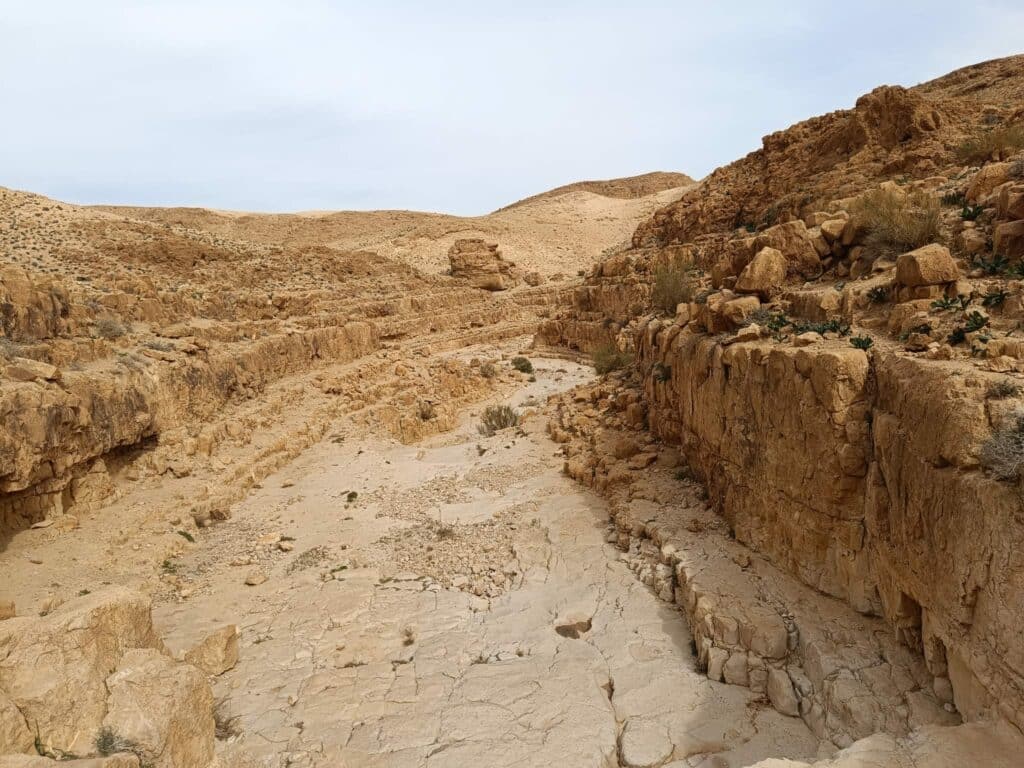
Nahal Peres
Not all trips in the rivers of the desert in Israel require a major hiking experience, and One of the best examples of an easy and convenient hike is the trip to the Nahal Peres, which runs for about 17 kilometers/10.5 miles. The river offers flat and very comfortable routes which are ideal to visit after the floods, when the water holes fill up and make the trip to the river even more magical.
Nahal Og
Climbing the waterfalls with the help of ladders, pegs, and rock steps is an integral part of the great trip to Nahal Og. The river is considered to be a great option for a family trip, which will allow you to enjoy the views of the narrow canyon you will walk through, with stunning views of the magnificent region. If you come here in the wintertime, make sure to protect your stuff with waterproof bags.
Nahal Tamar and Nahal Tsafit
Near the Ha’arava junction, begins a great hike that combines two streams – Nahal Tamar and Nahal Tsafit. The route combines a comfortable walk in canyons and wide and impressive riverbeds with an adventurous climbing of a mountain using rock steps and mesmerizing views of the Judean Desert and the Gilead Mountains.
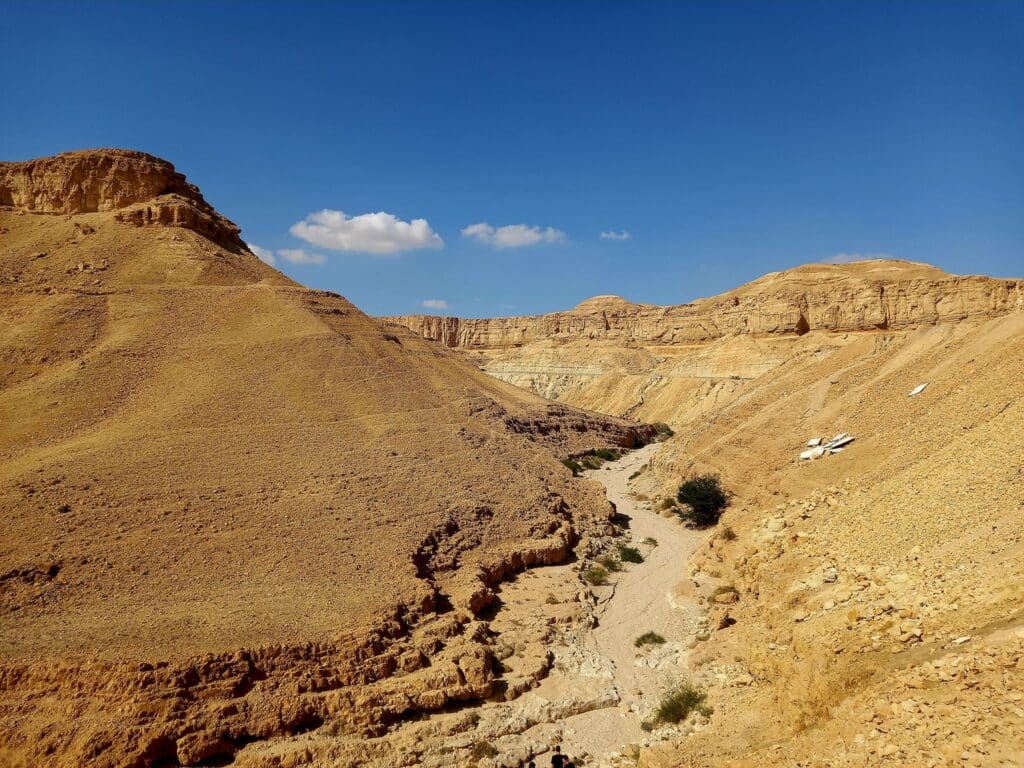
Nahal Ashalim
The route in Nahal Ashalim, which is considered one of the most challenging of the region, is the most fun to do after the floods when the waterholes are filled with water and some of them even require swimming in order to make your way through the river. During your magnificent hike, you will descend into the water in an adventurous and unique way, and get a spectacular view of the Moab mountains, while enjoying the peacefulness of the unique canyon.

